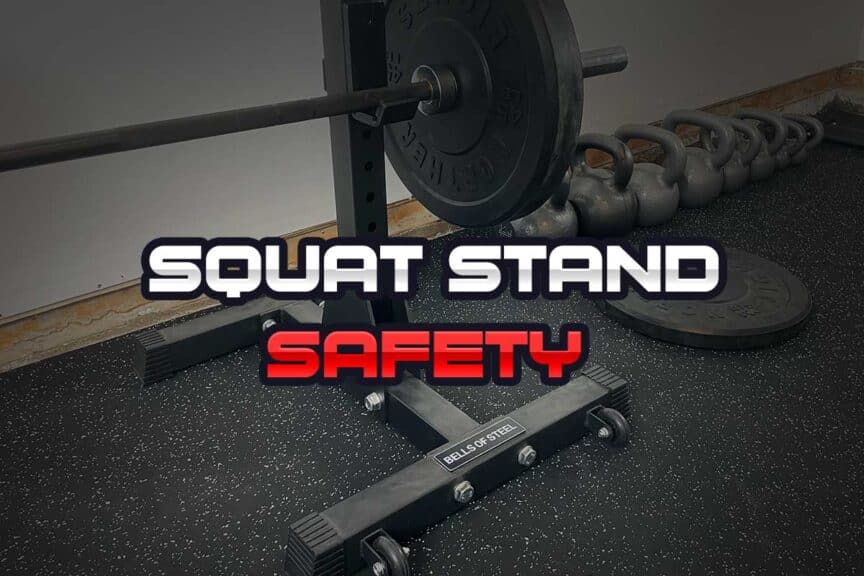I once came about two inches away from literally slicing my ankle in half with an angle grinder while working as an inexperienced general laborer. No word of a lie.
Does that mean that every angle grinder is inherently dangerous, no matter what? Nope. Does it mean they’re always without risk? Of course not. It’s all about minimizing risk and maximizing safety by knowing the tool you’re using.
Squat stands are the same way.
While ultimately not as stable as a traditional squat rack, squat stands are still quite safe provided they are of high quality, used appropriately, and by a lifter with appropriate experience.
It’s all about context; squat stands may not be safe for particular exercises or for some individuals. By the end of this article, you’ll be armed with all the necessary knowledge for learning the inherent risks of squat stands and how to minimize them for greater confidence when using them.
If you want to know all these finer details (and how to ensure maximum safety with any squat stand), keep reading!

Related article: Squat Wedges: Benefits | Drawbacks | When to Use Them
If you’re in the market for some squat stands (or other fitness equipment) and you’d like to consider supporting this little website of mine, feel free to check out the Bells Of Steel squat stands through the affiliate links I provide in this article. I wholeheartedly endorse these squat stands (they’re what I use). Any purchases you make through these links will provide me with a small commission at no cost to you, which I use to offset the expenses I incur with running this website.
I’d love to be able to throw some quantitative data your way regarding the safety/injury rates of lifters who use squat stands compared to a traditional squat rack; however, no such data or scientific studies exist for this topic. So, for this article, we’ll instead be relying on principles of physics, as you can’t argue with physics!
Related Content:
Factors that influence safety
Even the safest piece of fitness equipment can become unsafe if misused or without appropriate knowledge. Squat stands are no exception, and the way to maximize your safety when using them is to ensure two essential principles:
Principle 1: Understand the general nature and intended use of squat stands.
And…
Principle 2: Ensure competence with any exercise you perform with squat stands.
Implement both of these principles simultaneously and you’ll be well on your way to maximizing your safety (and the safety of anyone else around you) when using your stands. But simply leaving you with those two principles isn’t enough (in my passionate opinion), so let’s look at each of these in more detail (hey, I care about you and want you to stay safe so that you can lift for all your days ahead, ok?)
Now, to be clear, this whole article is referencing independent squat stands (often called indy squat stands). While there are squat stands that can be linked together, which will add an extra layer of stability (and thus, safety) to the squat stands, the angle of this article is to help increase your safety with independent squat stands, which are the “riskiest” type of squat stand to use.
The information provided below provides additional (and critical detail) that will be worth your time to read over (assuming you’re keen on becoming a squat stand expert)!
Each of the following factors will influence the overall safety of any squat stand that you use:
Factor 1: The quality of the squat stand
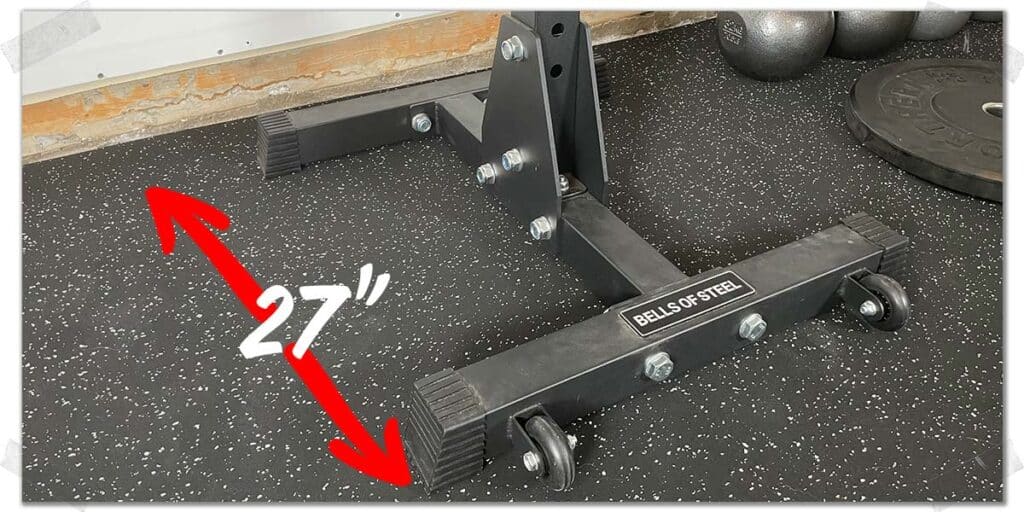
Just like with any other tool or product you use, quality is everything, and you usually get what you pay for. It’s no exception with squat stands.
A good set of squat stands will:
- Be made from a quality metal
- Have quality welds to ensure robustness
- Have a decent size base of support (to maximize stability)
- Won’t wobble or be unstable when holding a loaded barbell
- Be able to support at least a few hundred pounds of weight
Regarding that last point: even if you never plan on having a few hundred pounds resting on a barbell (which rests on the stands), you still want stands that are able to support this type of weight, as it only adds to the extra safety and security of your lifting endeavours.
BOS squat stand: Rated for 600 lbs
Titan T-3 squat stand: Rated for 1,000 lbs
Rogue S-4 squat stand:Tested at 1,000 lbs
Factor 2: Lifter experience
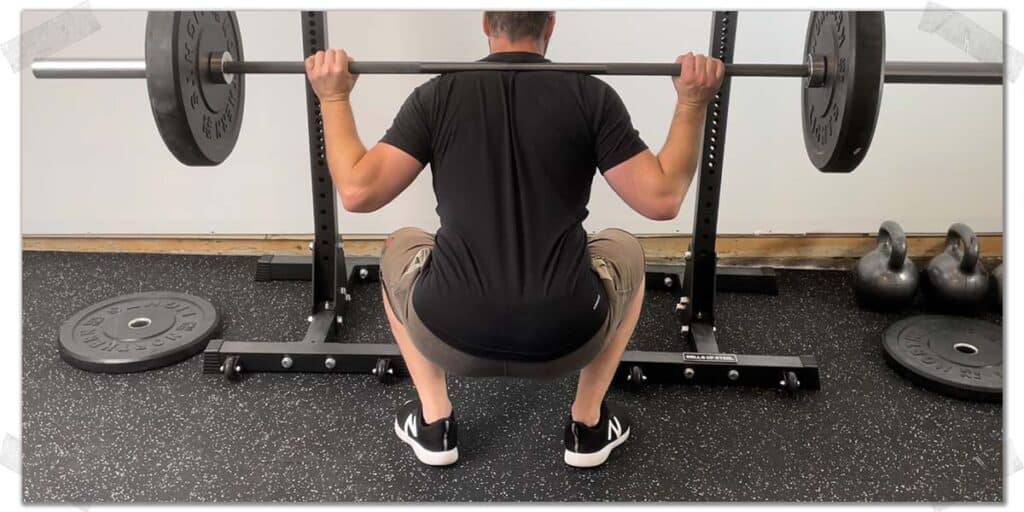
A scalpel can be incredibly dangerous, but you don’t make it safer by dulling up the blade; you make it safer by putting it in the hands of a trained surgeon. As such, the solution to making squat stands safer isn’t necessarily to bolt them to the floor (since that inherently defeats their purpose) but to ensure the lifter who uses them is educated on how to use them appropriately.
Here’s some general insight to consider if you’re new to using free weight training, barbell squatting, or lifting weights in general:
- If you’re brand new to barbell squatting, it may be worth starting in a squat cage or squat rack with the safety pins set to an appropriate height (ask a qualified individual if you need help with any of this).
- If you’re not comfortable using squat stands on your own, don’t. See if you can have a partner, trainer, or other qualified individual workout with you and spot you on your exercises (if appropriate) to keep you safe.
- Make sure you have your squat stands set to an appropriate height. If they’re too high, you may have difficulty un-racking and re-racking the weight.
Factor 3: Exercises performed
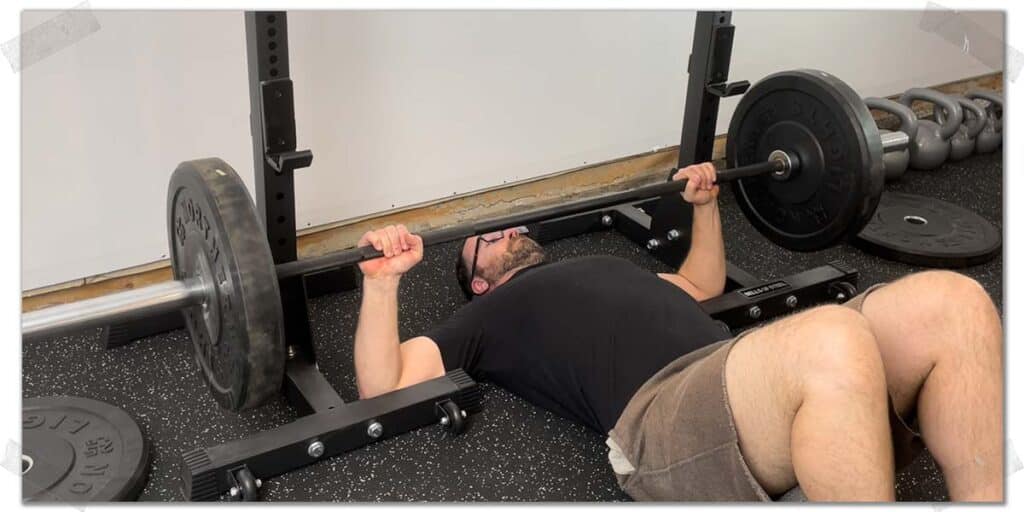
Squat stands aren’t meant to be used for every exercise that can be performed with a traditional squat cage or power rack. It’s a good idea to make sure you know which types of lifts are safe to perform with squat stands and which ones likely aren’t.
To keep yourself (and your surroundings) as safe as possible, consider sticking to exercises that:
- Allow you to easily un-rack and re-rack your weights in a controlled manner.
- Can be performed without accidentally bumping or hitting the squat stands as you perform the exercise.
- Allow you to get between the squat stands or right up to the hooks themselves.
- Allow you to visually locate the hooks that the barbell must rest on.
If any exercises you would like to perform don’t allow for any of the above points, they might not be worth doing. The goal here is to:
- Minimize any chances of the stands being knocked over or moved out of position while you’re completing your exercise.
- Minimize your chances of being unable to safely un-rack or re-rack your weight.
By making sure you use your squat stands for appropriate exercises, you’ll dramatically increase your overall safety while minimizing any risks of potential injury.
Factor 4: Rack height
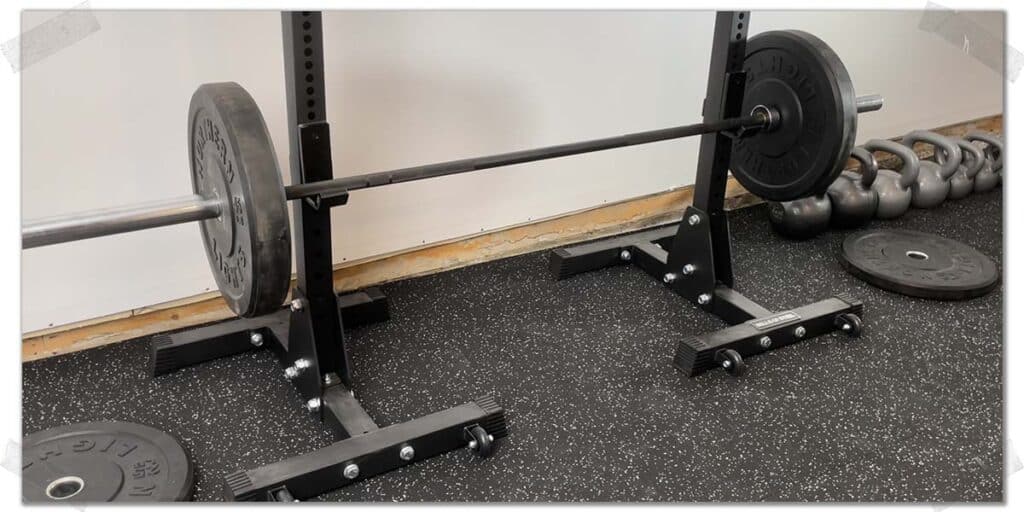
The higher your weight is racked on a squat stand, the more top-heavy the whole apparatus becomes. The more top-heavy something becomes (be it a squat stand or anything else), the greater the likelihood of the object toppling over.
The larger the base of support on your squat stands, the less likelihood there will be of the stands toppling over. Naturally, a high rack height with a small base of support is a recipe for disaster, while a large base of support with a low rack height is as safe as it gets.
The main factor to be aware of here is that taller lifters may need to be more mindful of this principle when performing exercises such as squats (which naturally have a higher rack height).
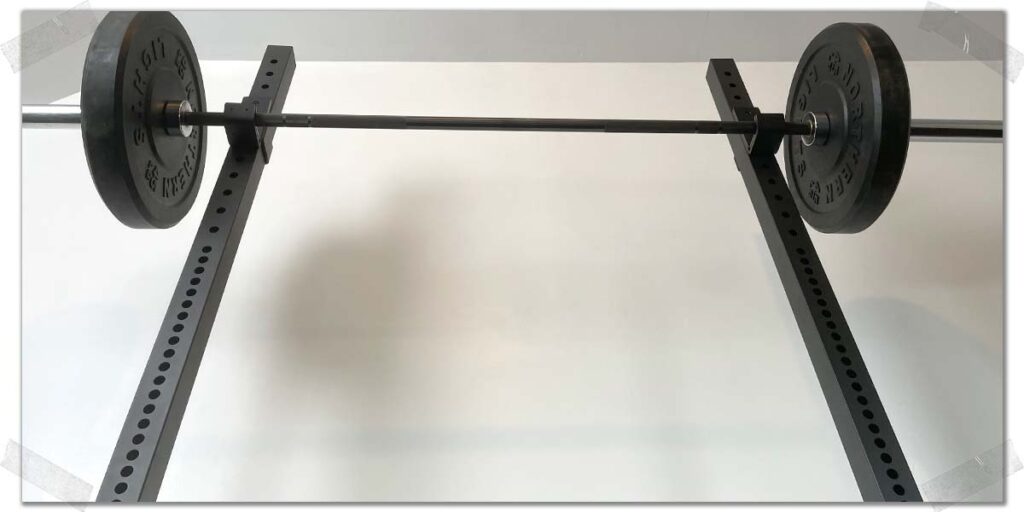
Other exercises, such as bench press or floor press, are naturally much safer lifts when compared to squats due to their much lower rack height. Any good quality squat stand will likely still have adequate stability at its highest rack height, but to be clear, the higher the rack height setting, the more mindful you’ll want to be when un-racking and re-racking the weight.
Factor 5: Weight being used
As with basically any other resistance exercise in existence, the heavier the weight being lifted, the more inherent risk that arises. I’ll give you a strategy later in this article for how to get around this, but for now, be aware that heavy loads have a higher propensity to cause squat stands to rattle around, particularly when re-racking your weight.
This isn’t to say that squat stands can’t hold a lot of weight; most quality squat stands can hold over five hundred pounds. Rather, you need to be mindful of racking and un-racking your weight with heavier loads, as you never want to miss a re-rack with a heavy load or set the load down in a way (i.e., not setting it down vertically) that can push the squat stand around.
Increasing squat stand safety
Now that you know the basic factors that can influence squat stand safety let’s look at some general actions you can take to ensure you’re staying as safe as possible whenever using your squat stands.
Always Face inwards for your squats

For highly proficient and very advanced lifters, there’s room for this rule to be broken; however, if you’re new to using squat stands or are new to lifting in general, I will always advocate you face inwards when lifting the barbell off the rack and when re-racking.
Facing inwards (and then stepping backwards) when unracking your weight for any squat-based movement will keep you much safer when the time comes to re-rack the weight back on the stands.
Muscle fatigue is often prominent at the end of an exercise during the re-rack phase. Therefore, you’ll want to re-rack the weight as quickly as possible, meaning you’ll often be in a rush to do so. As such, being able to walk forwards while easily visualizing where the barbell must rest is a much easier and safer process than trying to step backwards and crank your neck to the side to know if the barbell is where it needs to be.
Missing the hook on the re-rack can result in nasty injuries, and it happens more often than you might think (especially when walking backwards to try and re-rack the weight). Keep things as safe as possible and step forwards when re-racking rather than stepping backwards.
Know how to bail
While it’s not always an option for home gym lifters, knowing how to bail out of a lift (ditching the barbell and letting the weight fall to the floor). This typically only applies when you have bumper plates loaded onto the barbell (they’re designed to be dropped) and you have a very solid floor beneath you; however, if you’re using metal plates and if a worst-case scenario happens, it will likely still be safer to ditch the weight rather than trying to “save” the lift and risk injury.
Bailing can take a little bit of practice to become confident with (physically and psychologically), but it’s a skill that every serious lifter should learn if they want to become serious with their squatting and Olympic lifting (including all variations of these lifts).
If you want to learn how to do so in more detail, there are some great YouTube videos out there that you can watch to get started in learning this bailing process.
Stay sub-maximal
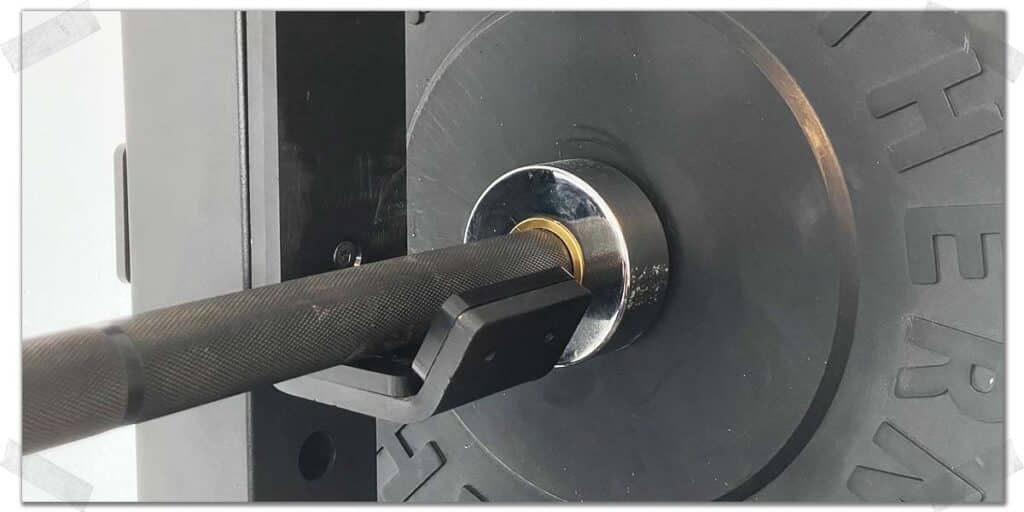
Unless you can safely bail out of any lift you’re performing, it’s likely a wise idea to avoid performing your maximal lifts with squat stands.
Again, if you’re a highly experienced lifter, there can be exceptions to this rule; however, even then, these proficient lifters will likely only attempt maximal lifts from squat stands if they’re lifting on a dedicated lifting platform (while using bumper plates) and can bail out of their lift at any time if things go wrong.
As a general rule: The less experienced you are with squatting, the lighter you should keep your lifts when using squat stands. The same could be said for your experience with using squat stands themselves. As your squat proficiency and confidence improve, you can perform heavier squats and lifts with your squat stands.
What you determine to be your “cut-off” point for how heavy to go will depend on your individual circumstances. If you’re brand new to either squatting or squat stands, I’d suggest starting by keeping to a weight that you can perform for eight or more repetitions while maintaining strict form. You can bump things up from there as you see fit.
Avoid using spotter arms
The closer the barbell is to the vertical column of your squat stands, the less likely your stands will tip over. As such, It’s a good idea to stay away from any attachments that will allow your barbell to rest further away from the squat stand.
Spotter arms are the primary attachment I’m referring to here; they’re a great piece of equipment to use, but they should only be used for power racks or squat cages that are bolted to the floor or heavy enough to be rock-solid at all times.
Here’s a great video that demonstrates this concept:
Weigh down your squat stands
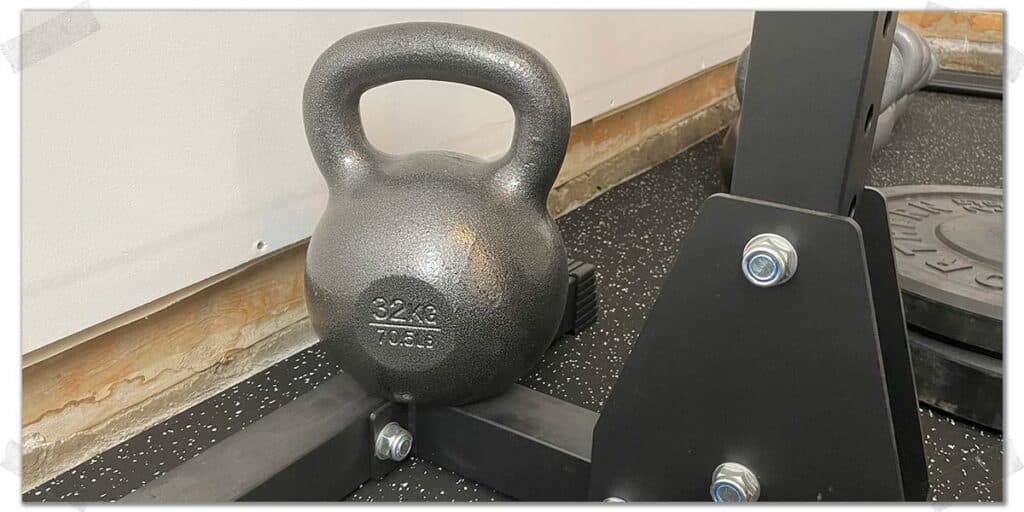
It never hurts to weigh down your squat stands, especially if you have any doubts or concerns about their stability (though if they’re noticeably unsteady, don’t use them!). This can come in handy if you’re using heavier loads and want some extra reinforcement.
Whether using heavy plates, kettlebells, or whatever else you may have in your home gym (or garage), adding some reinforcement around the base can go a long way.
Personal insight: I always like the idea of a heavier base on any squat stand to maximize my safety. While I’d still feel very confident without doing so, I often set my 70-pound kettlebells on my squat stands for a bit of extra reinforcement when performing my heavy lifts.
Just don’t make the mistake of thinking that adding some extra weight to the bottom of your squat stands will give you license to forego all necessary precautions when lifting; adding a bit of extra weight will add stability but won’t make your stands as stable as a squat cage or squat rack that’s bolted to the floor.
Final thoughts
Squat stands can be perfectly safe to use, provided you’re using ones that are high-grade quality, and you understand their intended usage. If you’re new to using squat stands, keep the weight on the lighter end until your exercise technique and confidence are adequate. Smart lifters are safe lifters, and safe lifting will help keep you lifting for many years to come!

Hi! I’m Jim Wittstrom, PT, DPT, CSCS, Pn1.
I am a physical therapist who is passionate about all things pertaining to strength & conditioning, human movement, injury prevention and rehabilitation. I created StrengthResurgence.com in order to help others become stronger and healthier. I also love helping aspiring students and therapists fulfill their dreams of becoming successful in school and within their clinical PT practice. Thanks for checking out my site!

